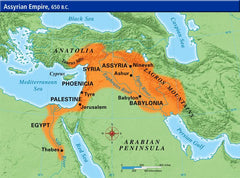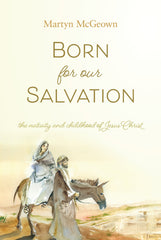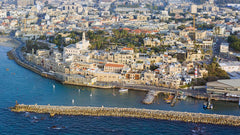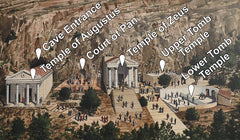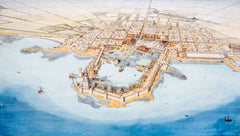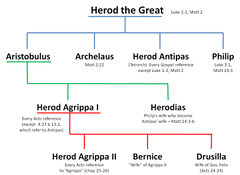Your cart is empty now.

The Reformed Baptism Form: A History from Dordt to today
This post was written by Mike Feenstra, a member of the Southwest Protestant Reformed Church in Wyoming, Michigan. Mike also teaches fifth grade at a Christian school in West Michigan.
_____________
God’s church is governed by Christ as the officebearer. According to the Belgic Confession, the church is governed in such a way that she is recognized by three marks. One such mark is the faithful administration of the sacraments. In our series on the baptism form, we have traced the history of the Reformed baptism form from the Reformation to the great Synod of Dordt. Those churches who are truly Reformed must trace their sacramental forms back to this Synod if they are to be called Reformed.
Throughout the history of the baptism form, there have always been officebearers who attempted to omit parts of the form. These omissions happened in different ways. First, book publishers printed the forms in any way which they saw fit and not according to synodical decisions. Second, ministers regularly skipped parts of the form during the sacrament so that later church printings followed suit (often by placing the “undesirable” section in parentheses and then deleting it altogether without approval). Third, the modern church world has approved a brand-new set of liturgical inventions that have not come from Dordt.
In his book, The Reformed Baptism Form: A Commentary, Bastiaan Wielenga lists several instances where the original form has not been followed. The examples show how violence has been inflicted upon the form. I believe that any printing of our Reformed baptism form must keep in mind this history of our form and the synodical decisions about the form. I give some examples to illustrate my point.
First, there is well known history of the three questions in the baptism form. During the Arminian controversy, followers of Jacobus Arminius refused to accede to the question whether they believed the doctrine as taught in “this Christian church.” By stating the word “this” they would state their agreement with the Counter-Remonstrants. Thanks be to God that the received form in the Psalter of the Protestant Reformed Churches still has “in this Christian church” (Wielenga, 329–34).
Second, there is the omission of a large section about Pharaoh in the first baptism prayer. In his book, Bless the Lord, O My Soul, Meeter explains that the RCA was the first Reformed denomination to use the form which we now have in The Psalter. This form was originally translated by a committee from a Reformed Church in New York City in 1767 for use in English-speaking church services. Understandably, this form did not take root until after the Revolutionary War. The story of this form is remarkable. One of the ancestors of Franklin D. Roosevelt was on the translation committee. A minister who was instrumental in the development of the form died in exile during the war. However, when this form was put into use in the early 1800s, many ministers would skip the part about Pharaoh when reading the form. There is no record of the reason for this, but that section of the form sadly disappeared from the RCA church manual (Meeter, 87–90).
Third, in the early 1900s, the CRC wrestled with how to introduce English into its worship services. Several synods and committees worked on the confessions, Psalter numbers, and the liturgical forms. Again, protests from churches arose where ministers refused to pray certain prayers in the baptism form because they believed the prayers were not biblical. To their credit, the CRC wisely quoted all of the Reformed Synods from the Agreement of Wesel all the way to the Synod of Dordt that all of the form should be read. Interestingly, when Louis Berkhof was searching for a faithful baptism form, it was the 1767 form from New York City that was proposed and then accepted by the CRC. Then, in 1914, the section about Pharaoh was reinserted into the first prayer of the baptism form. We are thankful that the Psalter follows the form approved at Dordt in this important prayer at the end of the baptism form.
The English translation that was adopted by the CRC in 1914 continues to be used in the back of The Psalter. This form was approved by the Synod of Dordt. That same form went through some difficult times from 1619 to 2019. First, after the Synod of Dordt, the approved form was supposed to be edited with corrections according to an approved edition from 1611. Then, according to the whims of book publishers, the changes were applied to an older form. After several years, the form was translated in the city of Leiden for use in Puritan Reformed refugee churches. (The Dutch Reformed insisted these English people follow the Reformed baptism form). This form became known as the “Leiden Liturgy.” This liturgy came to the new world and was used partly by the 1767 translation committee. The result is the smooth English lines of our English translation in the back of The Psalter. While this form is not a perfect translation of the exact decisions of the Synod of Dordt, it is a faithful rendering of the form for which we can be thankful.
In conclusion, first, we take note of God’s work of guiding the Reformed baptism form for use in English speaking churches. The form used in The Psalter has an interesting history that is often overlooked, but nevertheless underscores how God has preserved the faithful administration of the sacraments according to Dordt. Second, history has shown over and over that whenever new Psalters are printed, the liturgical forms are often printed without carefully searching out official Synodical decisions. The church is the pillar and ground of the truth according to 1 Timothy 3:15. Also, 1 Corinthians 14:40 states the all must be done, “decently and in order.” It is my prayer that we handle our baptism form accordingly.
The content of the article above is the sole responsibility of the article author. This article does not necessarily reflect the opinions and beliefs of the Reformed Free Publishing staff or Association, and the article author does not speak for the RFPA.

Donate
Your contributions make it possible for us to reach Christians in more markets and more lands around the world than ever before.
Select Frequency
Enter Amount

